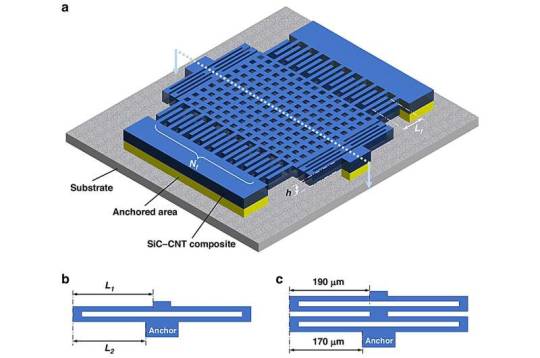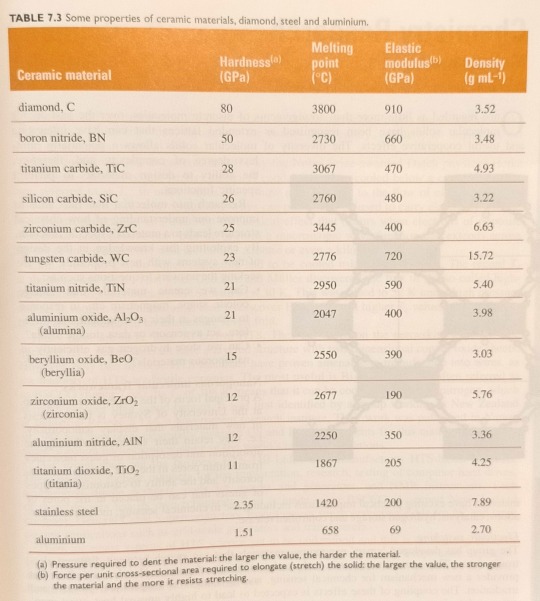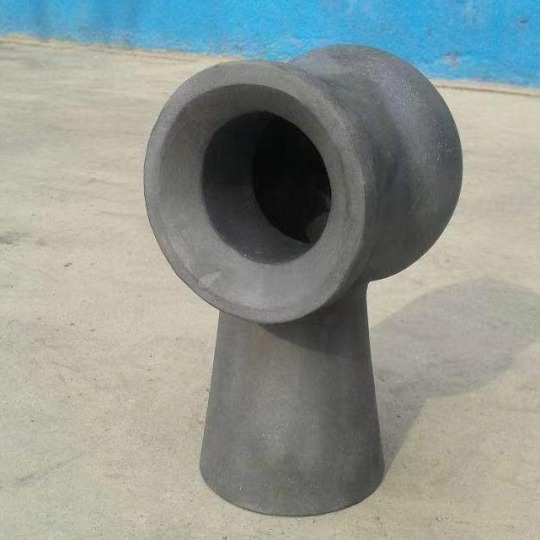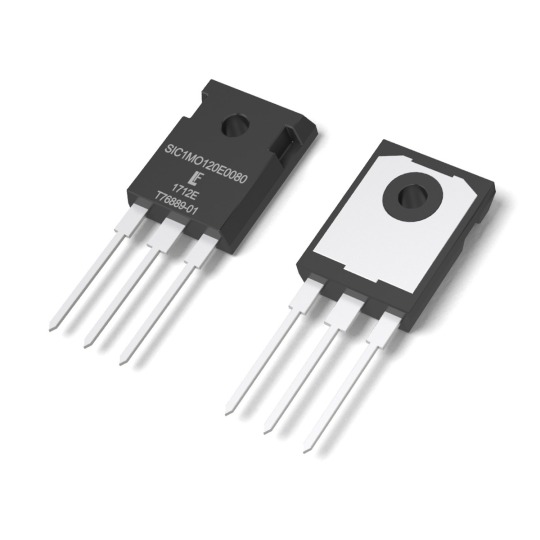#Silicon carbide
Text

Scientists develop composite accelerometer for extreme environments
The demand for microelectromechanical systems (MEMS) resilient to harsh environments is growing. Silicon-based MEMS struggle under extreme conditions, limited by their performance at elevated temperatures. Silicon carbide (SiC) stands out as a promising solution, offering unmatched thermal, electrical, and mechanical advantages for creating enduring MEMS.
Despite its potential, SiC MEMS development is challenged by the intricacies of bulk micromachining, calling for innovative strategies to harness SiC's strengths in crafting robust devices. In response, scientists have crafted an accelerometer using a novel silicon carbide-carbon nanotube (SiC-CNT) composite, capable of enduring severe environmental stress.
Published in Microsystems & Nanoengineering in April 2024, this research unveils a revolutionary material fusion, merging SiC's durability with the versatility and conductive qualities of CNTs.
Read more.
#Materials Science#Science#Composites#MEMS#Silicon#Silicon carbide#Carbides#Carbon nanotubes#Nanotechnology#Carbon#Nanotubes
13 notes
·
View notes
Photo

sintered silicon carbide crucible can withstand over 1650 celsius and provide an excellent surface area for reactions. this kind of silicon carbide ceramic have the ability to withstand high temperatures while maintaining their shape and size.
2 notes
·
View notes
Text
Unlocking the Potential of Silicon Carbide Ceramics: A Revolution in Durability and Efficiency
In the realm of advanced ceramics, silicon carbide (SiC) emerges as a standout material that is forging pathways toward new levels of performance in various industries. Silicon carbide ceramics are renowned for their exceptional properties, which include extraordinary hardness, high thermal conductivity, excellent wear resistance, low thermal expansion, and outstanding chemical stability. These characteristics make SiC ceramics an incredibly valuable component in applications where conventional materials might falter under extreme conditions.
### What is Silicon Carbide Ceramic?
Silicon carbide, a compound of silicon and carbon with a chemical formula of SiC, is a synthetic material known for its hardness next only to diamonds. It is produced through the Acheson process – a technique involving the reduction of silica sand with carbon in an electric resistance furnace. The resulting non-oxide ceramic is a polymorphic material, with numerous crystalline forms that grant it a wide range of properties suitable for different applications. The primary forms of SiC ceramics include sintered SiC, reaction bonded SiC, and hot pressed SiC, each with its unique fabrication process and use-case scenarios.
### Exceptional Physical Properties
One of the most compelling advantages of SiC ceramics is their extraordinary hardness. With a Mohs scale rating close to diamonds, these ceramics can endure severe abrasion and maintain their shape and functionality, where metals or polymer components would wear down.
Their thermal conductivity is equally impressive, which makes them ideal for applications that demand rapid heat dissipation. This includes electronics, where SiC substrates can help to cool devices, and in braking systems of vehicles, where they manage the heat generated during operation.
Moreover, SiC ceramics boast a low thermal expansion, ensuring dimensional stability across a range of temperatures. This property is crucial in precision applications such as aerospace components, where materials cannot afford to alter in shape in response to changing temperatures.
### Superior Chemical Stability
In chemically aggressive environments, SiC ceramics hold their own, showing remarkable resistance to oxidation and corrosion. This resistance extends the lifespan of components made from SiC and reduces maintenance needs, translating to long-term cost savings.
### Industrial and Commercial Applications
The industrial applications of SiC ceramics are extensive and diverse. In the automotive industry, SiC ceramic components are employed in pumps, rotors, and other parts that encounter high wear conditions. The material's resistance to high temperatures and corrosive substances makes it ideal for these applications.
In energy sectors, particularly within nuclear power plants, SiC’s resilience to radiation and thermal shock makes it an excellent choice for cladding material and other structural components. SiC-based ceramics are also being utilized in the rapidly growing field of semiconductor electronics, especially in high-voltage, high-temperature devices such as diodes, transistors, and LED lights.
Aerospace is another sector where SiC ceramics have made significant inroads. Components such as turbine blades, vanes, and other engine parts benefit from the material's resistance to thermal shock and wear. The telecom industry has recognized the material's potential in mirror substrates for space telescopes and other precision optical components, given its low weight and high stiffness-to-weight ratio.
### Advancements in Manufacturing Processes
The continued development of SiC ceramic manufacturing processes is a testament to the growing demand for this innovative material. Techniques such as chemical vapor deposition (CVD), hot pressing, and liquid-phase sintering have evolved to create high-purity, dense SiC ceramics with tailored properties for specific applications.
### Environmental Impact and Sustainability
Silicon carbide ceramics also contribute to environmental sustainability by enhancing the energy efficiency of systems where they are integrated and by optimizing lifespan due to their durability. SiC-based power electronics, for instance, operate at higher temperatures with greater efficiency, reducing cooling requirements and, consequently, energy consumption. Furthermore, their longevity reduces the need for frequent replacement, leading to less material waste.
### The Future of SiC Ceramics
Innovation continues to drive the future of SiC ceramics, with research focusing on enhancing properties such as electrical conductivity and creating composites that integrate SiC with other materials to achieve even greater performance benchmarks.
Investments in the automotive and aerospace industries signal a significant trend towards the adoption of SiC ceramics, propelled by the push for higher performance and improved energy efficiency. As electric vehicles become more prevalent, SiC components in electric motors and power electronics are expected to become standard, further reinforcing the material's position in the market.
### Embracing the SiC Ceramic Revolution
Silicon carbide ceramics represent a significant advancement in material science, offering a combination of properties that can be finely tuned to meet the requirements of the most demanding applications. As industries continue to discover new uses for this versatile material, the development of SiC ceramics is bound to accelerate, pushing the boundaries of what is possible in terms of performance, efficiency, and durability.
Businesses and researchers that embrace the potential of SiC ceramics stand at the forefront of a technological revolution, ready to unlock new levels of innovation and efficiency. As we move into an era where material capabilities are critical to competitive advantage, silicon carbide ceramics are poised to play a pivotal role in shaping the future of technology and industrial advancement.
0 notes
Text
Harnessing the Power of Silicon Carbide: Revolutionizing Industries with SiC Tubes
In the ever-evolving landscape of industrial advancements, the quest for materials that blend unparalleled durability with supreme efficiency has led to significant innovations. Among these, silicon carbide (SiC) emerges as a standout, especially in tube form, for its exceptional capabilities. Known for its superior thermal stability, remarkable mechanical strength, and outstanding chemical resistance, SiC tubes represent a leap forward in materials technology. These tubes offer unparalleled benefits across various high-demand sectors, symbolizing a breakthrough in overcoming traditional industrial challenges.
The Superior Properties of Silicon Carbide
Silicon carbide distinguishes itself in the materials science domain through a unique combination of thermal, mechanical, and chemical properties. Its exceptional thermal conductivity enables SiC tubes to maintain integrity and performance at temperatures where most metals and ceramics would falter. This resilience is crucial in high-temperature applications, from advanced heat exchangers to kiln furniture, where reliability under heat is non-negotiable.
The mechanical strength of SiC stands out, ensuring durability and wear resistance in physically demanding environments. This hardness not only contributes to the extended lifespan of SiC tubes but also maintains their structural integrity under stress, reducing the need for frequent replacements.
Furthermore, SiC's chemical resistance offers an unmatched advantage in corrosive environments. This inertness allows SiC tubes to transport aggressive chemicals without degrading, making them indispensable in the chemical processing industry. The combination of these properties makes SiC tubes a superior choice for a wide range of applications, pushing the boundaries of what's possible in industrial operations.
Advanced Manufacturing of SiC Tubes
The journey from raw silicon carbide to functional tubes is marked by sophisticated manufacturing processes that optimize the material's natural strengths. Among these, reaction bonding and sintering play pivotal roles in shaping the tubes' quality and performance.
Reaction Bonding
This method starts with creating a porous preform of silicon carbide and carbon. Molten silicon is then introduced, reacting with the carbon to form additional silicon carbide. The result is a tube that not only embodies the intrinsic benefits of silicon carbide but is also mechanically robust, making it well-suited for a variety of industrial applications. Reaction bonding is particularly valued for its ability to produce cost-effective SiC tubes without compromising on performance.
Sintering
Sintering takes a different approach by compacting SiC powder and heating it in an inert atmosphere. This process promotes molecular-level bonding among particles without melting, resulting in tubes that boast high purity and exceptional mechanical strength. These tubes are designed for the most demanding applications, where material integrity and performance are paramount.
1 note
·
View note
Text
Table 7.3 contains a list of some advanced ceramic materials and they're properties, along with the properties of some metals in common use. (...) Table 7.3 shows that ceramics generally contain metals in relatively high positive oxidation states, combined with small nonmetals (e.g. O, N and C) with high negative oxidation states. (...) Actually, the ceramic compounds listed in table 7.3 possess substantial covalent bonding between the atoms.

"Chemistry" 2e - Blackman, A., Bottle, S., Schmid, S., Mocerino, M., Wille, U.
#book quotes#chemistry#nonfiction#textbook#ceramics#carbon#oxygen#nitrogen#diamond#boron nitride#titanium carbide#silicon carbide#zirconium carbide#tungsten carbide#titanium nitride#alumina#aluminum oxide#beryllia#beryllium oxide#zirconia#zirconium oxide#aluminum nitride#titania#titanium dioxide#stainless steel#steel#aluminum
0 notes
Text
youtube
Silicon Carbide or Silicone? Is There Room for Both? Find out with onsemi: Electronica 2022
https://www.futureelectronics.com/resources/ftm/wide-bandgap-solutions. Silicon Carbide (SiC) promises huge efficiency improvements, and it’s the exploding trend in power electronics. But why is it so difficult to get hold of? Paul Klausner from onsemi takes us through the process of manufacturing SiC and answers the question as to whether it will replace Silicon or if there is place in electronics for both. https://youtu.be/x_BZ5JPdzZ8
#Electronica 2022#Electronica#Future Electronics#Silicon Carbide#Silicone#onsemi#SiC#power electronics#Paul Klausner#Youtube
1 note
·
View note
Text
youtube
What is the Future of Silicon Carbide Semiconductors - Microchip
https://www.futureelectronics.com/resources/featured-products/microchip-silicon-carbide-power-solutions. Microchip explains about the future of Silicon Carbide semiconductors. SiC semiconductors are three times more thermally conductive than silicon and enables higher voltages, extremely low switching losses improving system efficiency. https://youtu.be/5QQEqGUh024
#Silicon Carbide#SiC#Semiconductors#Microchip#SiC semiconductors#system efficiency#power density#cooling#Microchip Silicon Carbide Semiconductors#Microchip 3.3 kV Silicon Carbide#silicon#Youtube
1 note
·
View note
Text
youtube
What Can Silicon Carbide Devices do for the Cost of an Application - Microchip
https://www.futureelectronics.com/resources/featured-products/microchip-silicon-carbide-power-solutions. Microchip explains how SiC can reduce the cost of an application. SiCsemiconductors improve system efficiency, increase high power density, minimize cooling requirements, and reduce system size, weight and cost. https://youtu.be/dLcKLJ8OW1Q
#Silicon Carbide#SiC#Semiconductors#Microchip#SiC semiconductors#system efficiency#power density#cooling#Microchip Silicon Carbide Semiconductors#Microchip 3.3 kV Silicon Carbide#silicon#Youtube
1 note
·
View note
Text

Team presents new path to long-term data storage based on atomic-scale defects
With the development of the internet, social media and cloud computing, the amount of data created worldwide on a daily basis is sky-rocketing. This calls for new technologies that could provide higher storage densities combined with secure long-term data archiving far beyond the capabilities of traditional data storage devices.
An international research team led by the HZDR now proposes a new concept of long-term data storage based on atomic-scale defects in silicon carbide, a semiconducting material. These defects are created by a focused ion beam, providing high spatial resolution, fast writing speed and low energy for storing a single bit. The research is published in the journal Advanced Functional Materials.
Latest estimates assume about 330 million terabytes of new data created each day, with 90% of the world's data generated in the last two years alone. If the sheer numbers already suggest the need of advanced data storage technologies, it is by no means the only problem associated to this development.
Read more.
8 notes
·
View notes
Text
Mastering the Art of Silicon Carbide Nozzles: Engineering Marvels for Extreme Environments
In the ever-evolving landscape of high-temperature applications and extreme environments, silicon carbide (SiC) nozzles have emerged as true engineering marvels, offering unparalleled performance and durability. These exceptional components have revolutionized various industries, from aerospace and defense to manufacturing and energy production, enabling unprecedented advancements and pushing the boundaries of what is possible. This comprehensive guide delves into the intricacies of silicon carbide nozzles, exploring their unique properties, applications, and the cutting-edge technologies that make them an indispensable asset in extreme environments.
The Extraordinary Properties of Silicon Carbide
Silicon carbide, a remarkable ceramic compound composed of silicon and carbon, is renowned for its exceptional thermal, mechanical, and chemical properties. With a melting point exceeding 2700ᄚC (4892ᄚF), SiC boasts outstanding thermal stability, enabling it to withstand extreme temperatures without compromising its structural integrity. Its hardness, second only to diamond, translates into exceptional wear resistance, making it an ideal material for applications involving abrasive environments or high-velocity particle flows.
Moreover, silicon carbide exhibits remarkable chemical inertness, resisting corrosion and oxidation even in the most demanding conditions. This characteristic ensures prolonged service life and minimizes maintenance requirements, contributing to cost-effectiveness and operational efficiency. The unique combination of these properties makes SiC an ideal choice for high-temperature nozzle applications, where performance and reliability are paramount.
Precision Engineering: Crafting Perfection
The design and manufacturing of silicon carbide nozzles are intricate processes that demand precision engineering and cutting-edge technologies. These nozzles are typically manufactured through advanced techniques such as chemical vapor deposition (CVD), reaction bonding, or hot isostatic pressing (HIP), ensuring consistent quality and performance.
Intricate geometries and complex internal channels are meticulously crafted to optimize fluid dynamics, ensuring precise control over flow patterns and minimizing turbulence. Advanced computational fluid dynamics (CFD) simulations are employed to analyze and refine nozzle designs, enabling engineers to achieve optimal performance tailored to specific application requirements.
Furthermore, advanced surface treatments and coatings can be applied to silicon carbide nozzles, enhancing their performance and tailoring them to specific operating conditions. These coatings may include erosion-resistant materials, thermal barrier coatings, or specialized coatings designed to improve chemical resistance or thermal management.
Applications Pushing the Boundaries
Silicon carbide nozzles have found widespread applications across diverse industries, enabling unprecedented advancements and pushing the boundaries of what is possible in high-temperature environments. Here are some of the most prominent applications:
Aerospace and Defense:
Rocket nozzles: SiC nozzles are instrumental in solid rocket motors and liquid rocket engines, withstanding the extreme temperatures and erosive conditions during rocket firing. Their exceptional thermal stability and wear resistance ensure reliable performance and extended service life, making them a critical component in space exploration and defense applications.
Plasma spray nozzles: Used in plasma spray systems for thermal barrier coatings, these nozzles endure the high-temperature plasma jet without degradation, enabling the deposition of advanced protective coatings on critical components.
Manufacturing:
Sand blasting nozzles: The hardness and wear resistance of SiC make it ideal for sandblasting applications, ensuring prolonged service life and consistent performance. These nozzles enable efficient surface preparation and finishing processes in various manufacturing industries.
Cutting nozzles: SiC nozzles are employed in high-temperature cutting processes like oxy-fuel cutting and plasma cutting, enabling precise and efficient material processing. Their ability to withstand extreme temperatures and abrasive environments ensures accurate cuts and extended tool life.
Energy Production:
Furnace components: Silicon carbide is utilized to manufacture burner nozzles, thermocouple protection tubes, and other high-temperature furnace components, ensuring reliable operation and extended service life in demanding environments.
Gasification processes: SiC nozzles find applications in gasification systems, facilitating the conversion of solid or liquid feedstocks into syngas under extreme conditions. Their chemical inertness and thermal stability make them ideal for handling corrosive and high-temperature gases.
Research and Development:
High-temperature testing: SiC nozzles play a crucial role in research and development efforts involving high-temperature environments, enabling scientists and engineers to push the boundaries of material science and engineering. Their exceptional performance allows for accurate data collection and reliable testing under extreme conditions.
Advancements and Future Prospects
The field of silicon carbide nozzles is continuously evolving, driven by advancements in material science, manufacturing techniques, and application-specific requirements. Ongoing research efforts are focused on optimizing nozzle designs for improved flow dynamics, enhanced thermal management, and increased durability.
The integration of additive manufacturing technologies, such as 3D printing, is paving the way for innovative nozzle designs with complex geometries and internal structures tailored to specific applications. This synergy between cutting-edge manufacturing techniques and material science promises to unlock new potentials, driving efficiency, precision, and cost-effectiveness in various industries.
Furthermore, the development of new coating materials and surface treatments holds the promise of further enhancing the performance and lifespan of SiC nozzles. Researchers are exploring advanced coating systems that can provide additional protection against erosion, corrosion, and thermal degradation, extending the operational envelope of these nozzles in even more extreme environments.
As computational power and simulation capabilities continue to advance, the use of sophisticated computational fluid dynamics (CFD) simulations will become increasingly prevalent in the design and optimization of silicon carbide nozzles. These simulations will enable engineers to accurately predict fluid flow patterns, thermal gradients, and potential areas of wear or erosion, allowing for proactive design improvements and optimizations.
Leveraging Synergies for Groundbreaking Innovations
The future of silicon carbide nozzles lies in the seamless integration of cutting-edge technologies and multidisciplinary collaborations. By fostering synergies between material science, computational modeling, advanced manufacturing techniques, and application-specific expertise, engineers and researchers can unlock groundbreaking innovations in nozzle design and performance.
One exciting area of exploration is the development of hybrid nozzle systems, combining the exceptional properties of silicon carbide with other advanced materials or composites. These hybrid designs could leverage the strengths of multiple materials to create nozzles with tailored properties, such as enhanced thermal management, improved erosion resistance, or optimized fluid dynamics.
Additionally, the integration of smart sensing technologies and real-time monitoring systems could revolutionize the way silicon carbide nozzles are utilized and maintained. Embedded sensors could provide valuable data on operating conditions, wear rates, and potential failure points, enabling predictive maintenance strategies and proactive interventions to maximize service life and minimize downtime.
Conclusion: Mastering the Art of Extreme Engineering
Silicon carbide nozzles have proven to be true engineering marvels, enabling unprecedented performance and reliability in high-temperature and extreme environments. Their exceptional thermal stability, wear resistance, and chemical inertness make them indispensable components in applications ranging from aerospace and defense to manufacturing and energy production.
As technology continues to advance, the demand for silicon carbide nozzles is expected to grow, driving further innovation and advancements in material science and manufacturing techniques. By harnessing the extraordinary properties of these exceptional components, industries can push the boundaries of what is possible, enabling new frontiers in innovation and technological progress.
Through precision engineering, cutting-edge manufacturing processes, and continuous research and development, silicon carbide nozzles will continue to redefine the limits of what is achievable in extreme environments, empowering engineers and scientists to tackle ever-more challenging applications and unlocking new realms of possibility.
By mastering the art of silicon carbide nozzle design and manufacturing, visionary engineers and researchers will shape the future of extreme engineering, propelling humanity's ability to explore, create, and push the boundaries of what was once deemed impossible.

0 notes
Text
Silicon carbide burner nozzle
Silicon carbide burner nozzle is utilized in numerous industrial heating systems for various purposes, due to their high-temperature stability, resistance to chemical corrosion and durability.
Reaction bonded silicon carbide is produced using extrusion and cold isostatic pressing to create pasty mixtures which are sintered into plates or blocks before being machined using CNC machining to specific dimensions.
Industrial furnaces aim to achieve an even temperature profile within their chamber. Unfortunately, the placement of burners within a kiln can result in localised overheating due to direct radiant heating from their flames causing localised overheating. Silicon carbide burner nozzle in industrial kilns and furnaces can help alleviate this issue as they shield flames away from products and furniture, thus reducing direct flame exposure, thus preventing overheating and improving product quality.

0 notes
Video
youtube
What is the Future of Silicon Carbide Semiconductors - Microchip
https://www.futureelectronics.com/resources/featured-products/microchip-silicon-carbide-power-solutions. Microchip explains about the future of Silicon Carbide semiconductors. SiC semiconductors are three times more thermally conductive than silicon and enables higher voltages, extremely low switching losses improving system efficiency. https://youtu.be/5QQEqGUh024
0 notes
Text
Properties of cubic silicon carbide
Cubic silicon carbide has high strength, high hardness, high thermal conductivity, high sintering activity, and excellent physical and chemical properties. Its hardness is close to that of diamond. When polishing, its performance far exceeds that of white corundum, black silicon carbide and green silicon carbide. Cubic silicon carbide has good electrical conductivity, excellent thermal conductivity and low thermal expansion coefficient, so it will suffer less thermal stress when heating and cooling.
Cubic silicon carbide can be prepared by laser method, plasma method and solid phase synthesis method. Among them, the solid-phase synthesis method can achieve dense particles, high purity, and high crystallization. However, the technical difficulty of the solid-phase synthesis method is also relatively high.
0 notes
Text
Can Silicon Carbide Conduct Electricity?

In its pure state, silicon carbide acts as an electrical insulator. SiC, on the other hand, can express semi-conduction properties, which means that as a semiconductor, it neither allows a free-flowing current nor entirely repels it, with the controlled addition of impurities or doping agents, and because it has the appropriate resistivity.
Doping SiC with aluminum, boron, or gallium results in a p-type semiconducting SiC, whereas nitrogen and phosphorus impurities produce an N-type semiconductor. Furthermore, regulated doping could potentially lead to superconductivity.
However, electrical aging, or the rise in electrical resistivity, may have an impact on the electrical conductivity characteristics of silicon carbide. The oxidation of the substance is thought to be connected to aging. Depending on variables like voltage or the intensity of infrared, visible, and ultraviolet photons, SiC can conduct electricity in some situations but not in others.
Want to know more about Silicon Carbide and SiC MOSFET??
Visit our official website - millenniumsemi.com for complete information!
1 note
·
View note